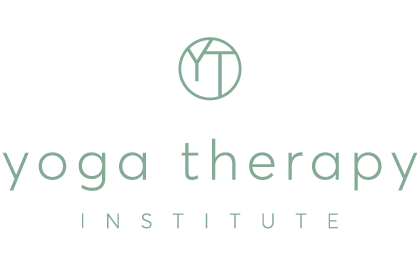Even when a disease or condition cannot be cured, yoga as medicine can benefit the practitioner in numerous ways. Learn the basics for integrating therapeutic yoga into your students’ lives. While any type of yoga can bring health benefits, yoga therapy involves employing a variety of yoga practices to try to improve a health condition or to ease a natural process, such as pregnancy or menopause. Among the yogic tools used therapeutically are asana (the physical postures), pranayama (breathing exercises), meditation, and guided imagery. Although many people don’t realize it, yogis also consider diet an integral part of yoga and therefore of yoga therapy.
Why Yoga Therapy?
Therapeutic yoga is an inherently holistic approach, simultaneously working on the body, mind, and spirit. Various yoga practices systematically strengthen different systems in the body, including the heart and cardiovascular system, the lungs, muscles, and the nervous system. Yoga practices can improve function of the digestive system, foster psychological well-being, and improve oxygen delivery to tissues. Yoga also can help the body more efficiently remove waste products, carcinogens, and cellular toxins.
Most people in the West live stressful lives, and yoga—and by extension yoga therapy—is perhaps the best overall stress reduction system ever invented. Stress has been linked to a wide variety of medical problems, from migraine headaches and irritable bowel syndrome to potentially lifethreatening conditions such as diabetes, osteoporosis, and heart disease. Since persistently high levels of stress hormones, particularly cortisol, can undermine function of the immune system, here too yoga can help.
While yoga by itself can alleviate a number of problems, it is particularly effective as a complement to other forms of health care, both alternative and conventional. Studies suggest, for example, that yoga therapy can lessen the side effects of chemotherapy and radiation treatments for people with cancer and facilitate faster recovery after bypass surgery. In clinical trials, many patients with asthma, type II diabetes (formerly known as adult-onset diabetes), or high blood pressure who began a regular practice of yoga were able to either lower their drug dosage, or eliminate some pills entirely. Less medication means fewer side effects, and, sometimes, very substantial cost savings.
One Step at a Time
While yoga is strong medicine, in general it is slow medicine. The key to successful yoga therapy is an incremental approach, which tends to be safer and more effective than more aggressive strategies. It is best to begin yoga [therapy] as medicine slowly and ramp up the intensity and duration of practice only as circumstances allow. For some students, particularly those with serious medical problems, therapeutic yoga might begin with only a posture or two, or a single breathing exercise, until the student is ready for more.
In any yoga therapy session, ideally you only want to teach a student as much as they are going to be able to practice at home. Better to teach a few things well than to have them try to do more with less precision. An exception to this rule would be when you teach a specific series of practices in one session in order to teach the student to relieve a current symptom, with only a small portion of the total practice assigned as homework. More experienced students, of course, may be able to handle much more.
One Size Does Not Fit All
Probably the most common misconception I see regarding yoga therapy it that there is one particular pose or sequences of practices that is therapeutic for a condition. People often ask me, for example, what pose they should do for lower back pain or for Parkinson’s disease. The answer is that it depends.
No two people are alike. People have different strengths and weaknesses, different degrees of overall health and fitness, and different levels of experience with yoga. Even people with exactly the same condition—say breast cancer—may vary in disease severity, their stage of treatment, and the amount of time they can devote to their yoga practice. Many people have more than one condition, and practices you might normally suggest for one problem could be contraindicated for another. Each of these factors will have a major impact on your choice of recommended practices.
As I travel throughout India and the United States to research yoga therapy, I notice that even masters who write books and articles recommending specific sequences for particular conditions often don’t use these sequences when they work with students. Instead, they evaluate the individual in front of them and decide what is best on a case-by-case basis. What worked for a student one day may not work the next if they’ve just had a fight with their spouse or have come down with a cold. Even a style like Kundalini Yoga (in the style of Yogi Bhajan), which recommends specific sequences (called kriyas) for particular conditions, suggests that teachers use their discretion in deciding when a kriya is appropriate and whether the recommended timings should be modified.
Think of recommended sequences as a jumping-off point to consider how to treat a student, not as cookbook prescriptions. Sometimes you’ll choose something that seems like it ought to work, but doesn’t work when the student tries it out. Strained breathing, glazed eyes, or difficulty in execution that precludes practicing the sequence at home are all signs that you may need to try another approach. Being mindful and attentive, making subtle observations, and adjusting your prescription accordingly are all practices of a good yoga therapist.
Dr Timothy McCall is a board-certified physician specialising in internal medicine.

